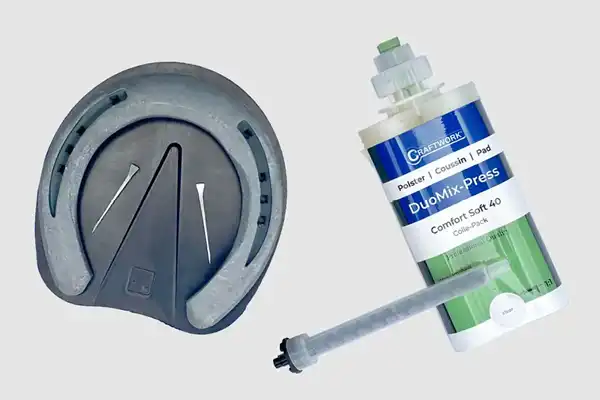The Regular (Common) Horseshoeing
1. Starting with the Assessment
Every horseshoeing process begins with a thorough evaluation:
- Condition of the old horseshoes
- Assessment of the horse while standing (static analysis)
- Movement analysis (dynamics/biomechanics)
The horse’s movement is particularly important so that the farrier can properly evaluate footfall as well as the interplay between conformation and limb alignment. A level and suitable surface for observing the horse’s gait is essential for this purpose.
2. The Art of Horseshoeing
Every horse is unique – in many cases, it shows four different limb alignments, resulting in four different hoof shapes. This leads to a number of factors that must be considered to ensure accurate hoof trimming and appropriate hoof protection.
To develop a well-thought-out shoeing plan, the following aspects must be taken into account:
- Age of the horse
- Housing and environmental conditions
- Level of training
- Intended use
- Limb alignment and movement
- Hoof shape and the consistency of the hoof capsule
3. Preparing the Hoof
Once the assessment is complete, the practical work begins:
- The old shoes are removed.
- A trial cut at the toe is made to check the length of the hoof wall and the thickness and quality of the sole.
- The hoof is then roughly cleaned and the hoof wall is trimmed to match the natural footfall and the alignment of the pastern.
Experience is critical here, as even a small misjudgment can negatively affect the horse’s gait. Observing the horse’s movement without shoes can also be insightful, since shoeing itself influences movement.
Once the hoof length aligns with the limb axis and the weight-bearing surface is as level as possible, the sole and frog are trimmed. This step must be carried out with the utmost precision – a solid foundation is just as important in hoof care as it is in construction.
4. Selecting and Fitting the Horseshoes
Depending on the horse’s conformation, age, usage, and any necessary corrections, the appropriate shoes are selected. After a thorough analysis, the shoes are heated and adjusted with precision craftsmanship. The focus is not on speed, but on results – a skilled farrier is self-critical and would rather make multiple adjustments until the fit is perfect.
The “Standard” Shoe Fit:
- The shoe sits flush with the hoof wall from the toe to the widest part of the hoof.
- From there, the shoe is fitted so that a plumb line from the coronary band drops directly onto the outer edge of the shoe.
- Front hooves: Overhang = half the height of the heels
- Hind hooves: Shoe should ideally reach the end of the bulbs of the heel
Modern Materials & Craftsmanship
The market today offers an enormous variety of materials and products for hoof protection:
- Horseshoes made of steel, cast iron, aluminum, titanium, brass
- Plastic hoof protection (for nailing or gluing)
- Hoof boots, pads, studs, anti-slip devices
- Inserts and hoof cushions made from silicone or polyurethane
- Synthetic horn materials with varying properties
Each material brings its own requirements for tools and processing. This is where the true expertise of the modern farrier shines: in the ability to combine professional analysis, consulting skills, and manual craftsmanship.
Knowledge is a Must
Ongoing research and the development of new materials continually shape the farrier profession. Continuing education is more important today than ever before. Riders and veterinarians are often overwhelmed by the wide range of products available. Many innovations are marketed as “the best,” but not every product is suitable for every horse. This is where the experienced farrier plays a crucial role. They understand the complexities, analyze each horse individually, and select the most suitable hoof protection – based on sound expertise and skilled execution.
Important: All of this is part of regular horseshoeing – not therapeutic or orthopedic shoeing.
We extend our sincere thanks to all our clients who regularly provide us with valuable feedback on the products they use. Special thanks go to Uwe Lukas, master farrier and certified horseshoeing specialist with a workshop at the Telgte Veterinary Clinic in Warendorf, for his inspiring ideas and positive contributions to the creation of this article.





